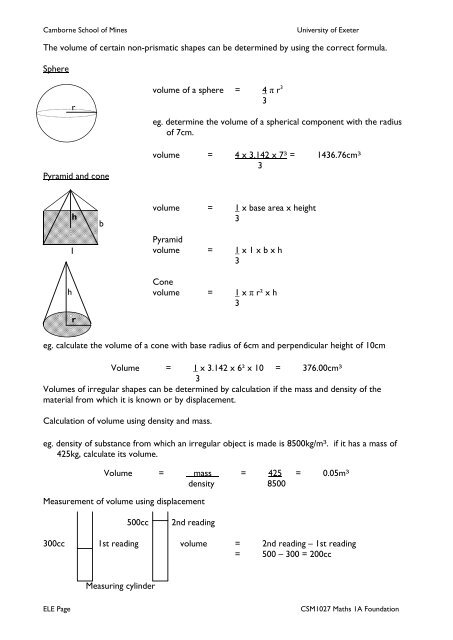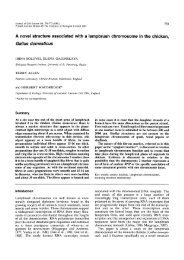Perimeter, Area and Volume of Regular Shapes - University of Exeter
Perimeter, Area and Volume of Regular Shapes - University of Exeter
Perimeter, Area and Volume of Regular Shapes - University of Exeter
You also want an ePaper? Increase the reach of your titles
YUMPU automatically turns print PDFs into web optimized ePapers that Google loves.
Camborne School <strong>of</strong> Mines<strong>University</strong> <strong>of</strong> <strong>Exeter</strong>The volume <strong>of</strong> certain non-prismatic shapes can be determined by using the correct formula.SphererPyramid <strong>and</strong> conevolume <strong>of</strong> a sphere = 4 π r 33eg. determine the volume <strong>of</strong> a spherical component with the radius<strong>of</strong> 7cm.volume = 4 x 3.142 x 7³ = 1436.76cm³3h1hrbvolume = 1 x base area x height3Pyramidvolume = 1 x 1 x b x h3Conevolume = 1 x π r² x h3eg. calculate the volume <strong>of</strong> a cone with base radius <strong>of</strong> 6cm <strong>and</strong> perpendicular height <strong>of</strong> 10cm<strong>Volume</strong> = 1 x 3.142 x 6² x 10 = 376.00cm³3<strong>Volume</strong>s <strong>of</strong> irregular shapes can be determined by calculation if the mass <strong>and</strong> density <strong>of</strong> thematerial from which it is known or by displacement.Calculation <strong>of</strong> volume using density <strong>and</strong> mass.eg. density <strong>of</strong> substance from which an irregular object is made is 8500kg/m³. if it has a mass <strong>of</strong>425kg, calculate its volume.<strong>Volume</strong> = mass = 425 = 0.05m³density 8500Measurement <strong>of</strong> volume using displacement500cc2nd reading300cc 1st reading volume = 2nd reading – 1st reading= 500 – 300 = 200ccMeasuring cylinderELE PageCSM1027 Maths 1A Foundation
















